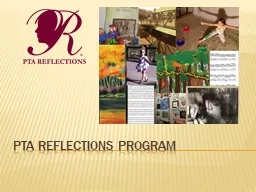PPT-Critical Reflections on teaching
Author : myesha-ticknor | Published Date : 2016-07-29
t ouchy feely subjects in the large group setting Alexandra Swift What do we mean by touchy feely subjects Communication skills eg Breaking Bad News Spirituality
Presentation Embed Code
Download Presentation
Download Presentation The PPT/PDF document "Critical Reflections on teaching" is the property of its rightful owner. Permission is granted to download and print the materials on this website for personal, non-commercial use only, and to display it on your personal computer provided you do not modify the materials and that you retain all copyright notices contained in the materials. By downloading content from our website, you accept the terms of this agreement.
Critical Reflections on teaching: Transcript
Download Rules Of Document
"Critical Reflections on teaching"The content belongs to its owner. You may download and print it for personal use, without modification, and keep all copyright notices. By downloading, you agree to these terms.
Related Documents














